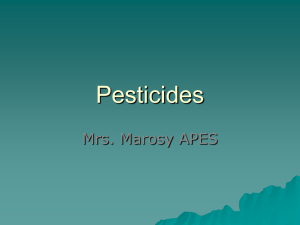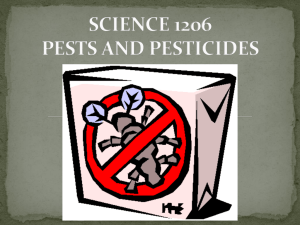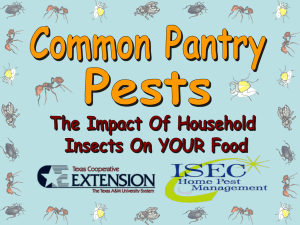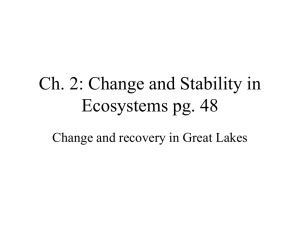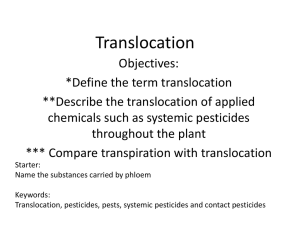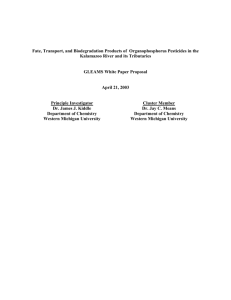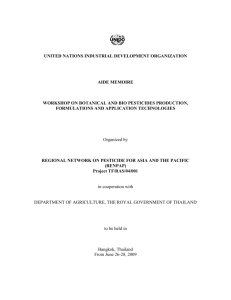Bioinformatics
advertisement
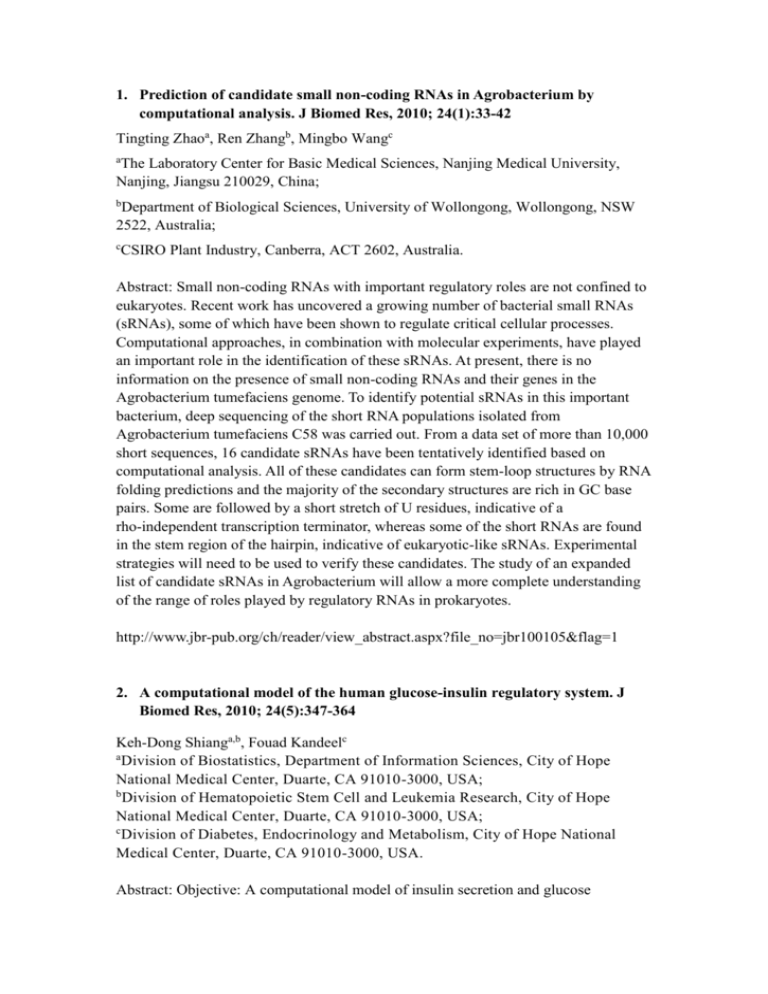
1. Prediction of candidate small non-coding RNAs in Agrobacterium by computational analysis. J Biomed Res, 2010; 24(1):33-42 Tingting Zhaoa, Ren Zhangb, Mingbo Wangc a The Laboratory Center for Basic Medical Sciences, Nanjing Medical University, Nanjing, Jiangsu 210029, China; b Department of Biological Sciences, University of Wollongong, Wollongong, NSW 2522, Australia; c CSIRO Plant Industry, Canberra, ACT 2602, Australia. Abstract: Small non-coding RNAs with important regulatory roles are not confined to eukaryotes. Recent work has uncovered a growing number of bacterial small RNAs (sRNAs), some of which have been shown to regulate critical cellular processes. Computational approaches, in combination with molecular experiments, have played an important role in the identification of these sRNAs. At present, there is no information on the presence of small non-coding RNAs and their genes in the Agrobacterium tumefaciens genome. To identify potential sRNAs in this important bacterium, deep sequencing of the short RNA populations isolated from Agrobacterium tumefaciens C58 was carried out. From a data set of more than 10,000 short sequences, 16 candidate sRNAs have been tentatively identified based on computational analysis. All of these candidates can form stem-loop structures by RNA folding predictions and the majority of the secondary structures are rich in GC base pairs. Some are followed by a short stretch of U residues, indicative of a rho-independent transcription terminator, whereas some of the short RNAs are found in the stem region of the hairpin, indicative of eukaryotic-like sRNAs. Experimental strategies will need to be used to verify these candidates. The study of an expanded list of candidate sRNAs in Agrobacterium will allow a more complete understanding of the range of roles played by regulatory RNAs in prokaryotes. http://www.jbr-pub.org/ch/reader/view_abstract.aspx?file_no=jbr100105&flag=1 2. A computational model of the human glucose-insulin regulatory system. J Biomed Res, 2010; 24(5):347-364 Keh-Dong Shianga,b, Fouad Kandeelc a Division of Biostatistics, Department of Information Sciences, City of Hope National Medical Center, Duarte, CA 91010-3000, USA; b Division of Hematopoietic Stem Cell and Leukemia Research, City of Hope National Medical Center, Duarte, CA 91010-3000, USA; c Division of Diabetes, Endocrinology and Metabolism, City of Hope National Medical Center, Duarte, CA 91010-3000, USA. Abstract: Objective: A computational model of insulin secretion and glucose metabolism for assisting the diagnosis of diabetes mellitus in clinical research is introduced. The proposed method for the estimation of parameters for a system of ordinary differential equations (ODEs) that represent the time course of plasma glucose and insulin concentrations during glucose tolerance test (GTT) in physiological studies is presented. The aim of this study was to explore how to interpret those laboratory glucose and insulin data as well as enhance the Ackerman mathematical model. Methods: Parameters estimation for a system of ODEs was performed by minimizing the sum of squared residuals (SSR) function, which quantifies the difference between theoretical model predictions and GTT's experimental observations. Our proposed perturbation search and multiple-shooting methods were applied during the estimating process. Results: Based on the Ackerman's published data, we estimated the key parameters by applying R-based iterative computer programs. As a result, the theoretically simulated curves perfectly matched the experimental data points. Our model showed that the estimated parameters, computed frequency and period values, were proven a good indicator of diabetes. Conclusion: The present paper introduces a computational algorithm to biomedical problems, particularly to endocrinology and metabolism fields, which involves two coupled differential equations with four parameters describing the glucose-insulin regulatory system that Acker-man proposed earlier. The enhanced approach may provide clinicians in endocrinology and metabolism field in-sight into the transition nature of human metabolic mechanism from normal to impaired glucose tolerance. http://www.jbr-pub.org/ch/reader/view_abstract.aspx?file_no=JBR100502&flag=1 3. Computational interaction analysis of organophosphorus pesticides with different metabolic proteins in humans. J Biomed Res, 2011; 25(5):335-347 Amit Kumar Sharmaa, Karuna Gaurb, Rajeev Kumar Tiwaria, Mulayam Singh Gaura a Pesticides Research & Sensors Laboratory, Department of Physics, Hindustan College of Science and Technology, Farah, Mathura-281122 (U.P.) India; b Department of Bioscience, R. D. Govt. Girls College, Bharatpur, Rajasthan 321001, India. Abstract: Pesticides have the potential to leave harmful effects on humans, animals, other living organisms, and the environment. Several human metabolic proteins inhibited after exposure to organophosphorus pesticides absorbed through the skin, inhalation, eyes and oral mucosa, are most important targets for this interaction study. The crystal structure of five different proteins, PDBIDs: 3LII, 3NXU, 4GTU, 2XJ1 and 1YXA in Homo sapiens (H. sapiens), interact with organophosphorus pesticides at the molecular level. The 3-D structures were found to be of good quality and validated through PROCHECK, ERRAT and ProSA servers. The results show that the binding energy is maximum -45.21 relative units of cytochrome P450 protein with phosmet pesticide. In terms of H-bonding, methyl parathion and parathion with acetylcholinesterase protein, parathion, methylparathion and phosmet with protein kinase C show the highest interaction. We conclude that these organophosphorus pesticides are more toxic and inhibit enzymatic activity by interrupting the metabolic pathways in H. sapiens. http://www.jbr-pub.org/ch/reader/view_abstract.aspx?file_no=jbr110505&flag=1 4. Active motif finder - a bio-tool based on mutational structures in DNA sequences. J Biomed Res, 2011; 25(6):444-448 Mani Udayakumara, Palaniyandi Shanmuga-priyab, Kamalakannan Hemavathic, Rengasamy Seenivasagamd a Department of Bioinformatics; bDepartment of Bioinformatics; cDepartment of Bioinformatics, School of Chemical and Biotechnology, Shanmugha Arts Science Technology & Research Academy (SASTRA University), Tanjore, Tamilnadu 613402, India; d Division of Drug Discovery and Development, Centre of Molecular and Computational Biology, Department of Botany, St. Joseph College, Bangalore, Karnataka 560027, India. Abstract: Active Motif Finder (AMF) is a novel algorithmic tool, designed based on mutations in DNA sequences. Tools available at present for finding motifs are based on matching a given motif in the query sequence. AMF describes a new algorithm that identifies the occurrences of patterns which possess all kinds of mutations like insertion, deletion and mismatch. The algorithm is mainly based on the Alignment Score Matrix (ASM) computation by com-paring input motif with full length sequence. Much of the effort in bioinformatics is directed to identify these motifs in the sequences of newly discovered genes. The proposed bio-tool serves as an open resource for analysis and useful for studying polymorphisms in DNA sequences. AMF can be searched via a user-friendly interface. This tool is intended to serve the scientific community working in the areas of chemical and structural biology, and is freely available to all users, at http://www.sastra.edu/scbt/amf/. http://www.jbr-pub.org/ch/reader/view_abstract.aspx?file_no=JBR110610&flag=1 5. Three dimensional structure prediction and proton nuclear magnetic resonance analysis of toxic pesticides in human blood plasma. J Biomed Res, 2012; 26(3):170-184 Amit Kumar Sharma, Rajeev Kumar Tiwari, Mulayam Singh Gaur Pesticides Research and Sensors Laboratory, Department of Physics, Hindustan College of Science and Technology, Farah, Mathura-281122 (U.P.), India. Abstract: The purpose of this study was to investigate the nuclear magnetic resonance (NMR) assignments of hydrolyzed products extracted from human blood plasma. The correlations between chemical, functional and structural properties of highly toxic pesticides were investigated using the PreADME analysis. We observed that toxic pesticides possessed higher molecular weight and, more hydrogen bond donors and acceptors when compared with less toxic pesticides. The occurrence of functional groups and structural properties was analyzed using 1 H-NMR. The 1H-NMR spectra of the phosphomethoxy class of pesticides were characterized by methyl resonances at 3.7-3.9 ppm (δ) with the coupling constants of 11-16 Hz (JP-CH3). In phosphoethoxy pesticides, the methyl resonance was about 1.4 ppm (δ) with the coupling constant of 10 Hz (JP-CH2) and the methylene resonances was 4.2-4.4 ppm (δ) with the coupling constant of 0.8 Hz (JP-CH3), respectively. Our study shows that the values of four parameters such as chemical shift, coupling constant, integration and relaxation time correlated with the concentration of toxic pesticides, and can be used to characterise the proton groups in the molecular structures of toxic pesticides. http://www.jbr-pub.org/ch/reader/view_abstract.aspx?file_no=JBR120305&flag=1


